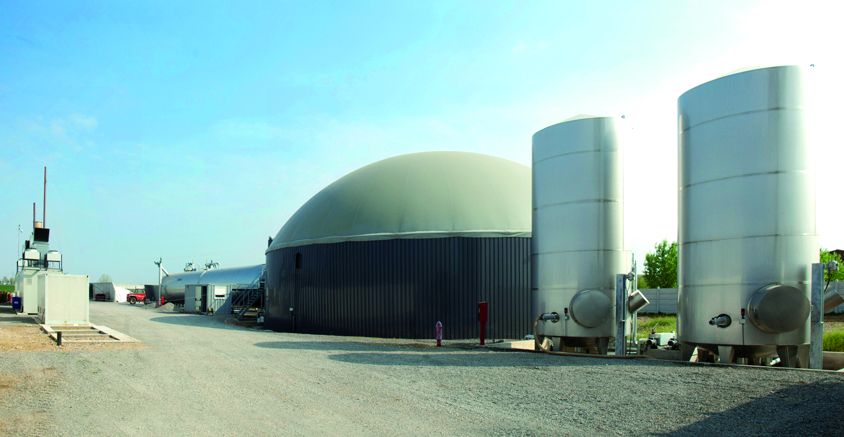

Biogas plants. Environmentally friendly and worthwhile investment.
Biogas plants are an environmentally friendly and worthwhile investment for local authorities, agricultural businesses and waste disposal companies in Germany and other countries. The Amendment to the German Renewable Energies Act has extended the state subsidization of the generation of energy from liquid and solid manure, residues and energy plants.
With the aid of detailed preliminary studies, individual process development, correct applications to the local authorities, short delivery, construction and commissioning times, we take advantage of all the possibilities of obtaining subsidies and optimizing your biogas plant. This includes choosing a suitable location and the locally available raw materials, as well as optimal use of the waste heat.
Turnkey biogas plants from EPC guarantee stable fermentation processes with maximum yield, minimal operating costs and maximum operational safety. The system solution from EPC for fermenting feedstocks comprises a single-phase, mesophilic biogas plant, which uses a continuous wet fermentation process. In wet fermentation, the fermenting substrate remains stirrable and flowable so that it can be thoroughly mixed during the process, thus ensuring a good exchange of nutrients and energy between bacteria and substrate. The residue from this fermentation process is then used as an agricultural fertilizer.
EPC Exclusives
Innovative technologies using trichlorosilane and monosilane
Vent gas recovery plants, including rectification units
Hazardous substance stores, including monosilane storage and handling systems
Process control optimized by fluidized bed reactor technology (FBR plants)

Dipl.-Ing. Franz-Josef Willems
Learn more here.
Downloads for EPC Brochures.







